
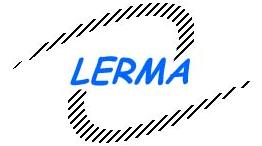



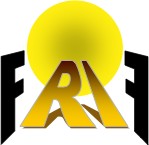


 Ecole
Internationale Daniel Chalonge
Ecole
Internationale Daniel Chalonge 
17th Paris Cosmology Colloquium 2013
THE NEW STANDARD MODEL OF THE UNIVERSE :
LAMBDA WARM DARK MATTER
(ΛWDM)
THEORY versus OBSERVATIONS
The International School Daniel Chalonge : 22 Years of Activity
Observatoire de Paris, Paris campus
24, 25 and 26 July 2013

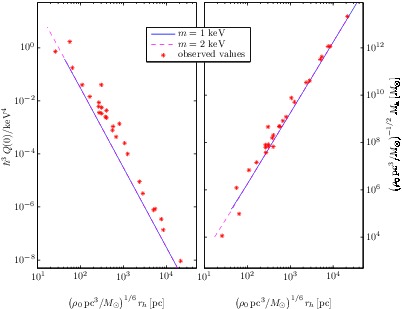
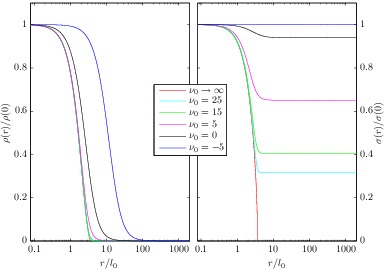
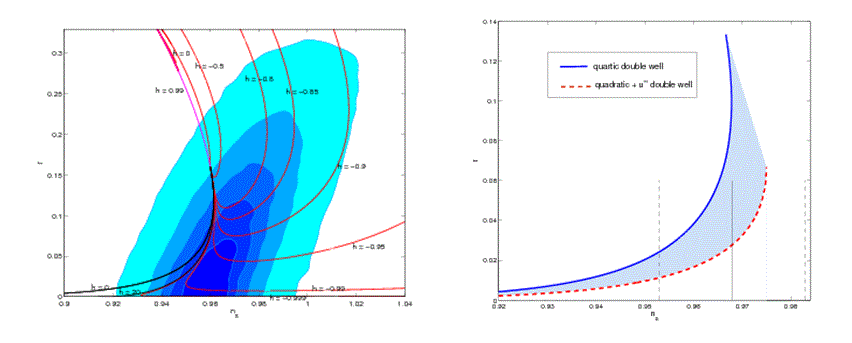
PURPOSE AND TOPICS
1. The new concordance model in agreement with observations: ΛWDM (Lambda-dark energy- Warm Dark Matter). Recently, Warm (keV scale) Dark Matter emerged impressively over CDM (Cold Dark Matter) as the leading Dark Matter candidate. Astronomical evidence that Cold Dark Matter (LambdaCDM) and its proposed tailored cures do not work at galactic and small scales is staggering. LambdaWDM solves naturally the problems of LambdaCDM and agrees remarkably well with the observations at galactic and small as well as large and cosmological scales. In contrast, LambdaCDM simulations only agree with observations at large scales.
In the context of this new Dark Matter situation, which implies novelties in the astrophysical, cosmological and keV particle physics context, this 17th Paris Colloquium 2013 is devoted to the LambdaWDM Standard Model of the Universe.
2. This Colloquium is within the astrofundamental physics spirit of the Chalonge School, focalised on recent observational and theoretical progress in the CMB, dark matter, dark energy, the new WDM framework to galaxy formation, and the theory of the early universe inflation with predictive power in the context of the LambdaWDM Standard Model of the Universe. The Colloquium addresses as well the theory and experimental search for the WDM particle physics candidates (keV sterile neutrinos). Astrophysical constraints including sterile neutrino decays points the sterile neutrino mass m around 2 keV. WDM predictions for EUCLID and PLANCK start to be available. MARE and an adapted KATRIN experiment could detect a keV sterile neutrino. A formidable WDM work to perform is ahead of us.
In summary, the aim of the meeting is to put together real data : cosmological, astrophysical, particle, nuclear physics data, and hard theory predictive approach connected to them in the framework of the LambdaWDM Standard Model of the Universe.
3. Context, CDM crisis and the CDM decline: On large cosmological scales, CDM agrees in general with observations but CDM does not agree with observations on galaxy scales and small scales. Over most of twenty years, increasing number of cyclic arguments and ad-hoc mechanisms or recipes were-and continue to be- introduced in the CDM galaxy scale simulations, in trying to deal with the CDM small scale crisis: Cusped profiles and overabundance of substructures are predicted by CDM. Too many satellites are predicted by CDM simulations while cored profiles and no such overabundant substructures are seen by astronomical observations. Galaxy formation within CDM is increasingly confusing and in despite of the proposed cures, does not agree with galaxy observations.
On
the CDM particle physics side, the situation is no less critical: So
far, all the dedicated experimental searches after most of twenty
years to find the theoretically proposed CDM particle candidate
(WIMP) have failed. The CDM indirect searches (invoking CDM
annihilation) to explain cosmic ray positron excesses, are in crisis
as well, as wimp annihilation models are plagued with growing
tailoring or fine tuning, and in any case, such cosmic rays excesses
are well explained and reproduced by natural astrophysical process
and sources. The so-called and repeatedly invoked 'wimp miracle'
is nothing but being able to solve one equation with three unknowns
(mass, decoupling temperature, and annihilation cross section) within
wimp models theoretically motivated by SUSY model building twenty
years ago (at that time those models were fashionable and believed
for many proposals).
After more than twenty years -and as
often in big-sized science-, CDM research has by now its own internal
inertia: growing CDM galactic simulations involves large super-computers and large
number of people working with, without agreement with the observations ;
CDM particle wimp search involve large and long-time planned experiments,
huge number of people, (and huge budgets) without producing wimp detection; one should not be surprised in principle,
if a fast strategic change would not yet operate in the CDM and wimp research, although its interest would progressively decline.
TOPICS OF THE COLLOQUIUM
Observational and theoretical progress on the nature of dark matter : keV scale warm dark matter
Cored density profiles in agreement with observations.
Large and small scale structure formation in agreement with observations at large scales and small (galactic) scales.
Warm (keV scale) dark matter from theory and observations.
The new quantum mechanical framework to galactic structure. WDM core sizes in agreement with observations.
Supermassive Black Holes : Theory and Observations. The clarifing and unifying WDM framework for stars, galaxies and cosmology.
Warm (keV scale) dark matter N-body simulations in agreement with observations.
Neutrinos in astrophysics and cosmology.
The new serious dark matter candidate: Sterile neutrinos at the keV scale.
Neutrinos mass bounds from cosmological data and from high precision beta decay experiments.
Dark energy: cosmological constant: the quantum energy of the cosmological vacuum.
The analysis of the CMB+LSS+SN data with the effective (Ginsburg-Landau) effective theory of inflation: New Inflation (double well inflaton potential) strongly favored by the CMB + LSS + SN data.
The presence of the lower bound for the primordial gravitons (non vanishing tensor to scalar ratio r) with the present CMB+LSS+SN data.
CMB news and polarization. Forecasts and Planck results.
and Other Topics.
Format of the Colloquium
Lectures cover from a motivation and pedagogical introduction till the last developments and recent results. This series pursues understanding, synthesis (rather than mixing), a unifying view and a careful interdisciplinarity. In addition, each Colloquium introduces and promotes through special sessions, subjects of high current interest for astrophysics and cosmology.All Lectures are plenary and followed by a discussion.
All participants are invited to take part in the discussions.
The Meeting is open to all scientists interested in the subject. Registration is mandatory. Registration information is given below.
The format of the Meeting is intended to allow easy and fruitful mutual contact and communication.
Sessions last for three days in the beautiful parisian campus of Observatoire de Paris (built on orders from Colbert and to plans by Claude Perrault from 1667 to 1672). All sessions take place at the Salle Cassini (Cassini Hall) in the historic Perrault building ("Bâtiment Perrault") of Observatoire de Paris HQ, just upstairs "Salle du Conseil" (Council Room). All Coffee-Tea breaks take place at the "Salle du Conseil" under the portraits of Laplace, Le Verrier, Lalande, Arago, Delambre and Louis XIV. The Registration desk and the Secretariat of the Colloquium take place at the "Grande Galerie" (Great Gallery) just aside facing Salle du Conseil
EXHIBITION
An exhibition at the "Grand Galerie" (Great Gallery) and "Salle Cassini" (Cassini Hall) will retrace the 22 years of activity of the Chalonge School and "the Golden Days" in "Astrofundamental Physics": The Construction of the Standard Model Of the Universe. The World High Altitude Observatories Network: World Cultural and Scientific Heritage.
The books and proceedings of the School since its creation, as well as historic Daniel Chalonge material, and Chalonge instruments will be on exhibition at the Great Gallery.
Informations on the previous Paris Cosmology Colloquia and of the school events are available at http://chalonge.obspm.fr (lecturers, lists of participants, lecture pdf files and photos during the Colloquia).
PROGRAMME and LECTURERS
Peter
BIERMANN (Chalonge Medal, MPI-Bonn, Germany & Univ of Alabama, Tuscaloosa, USA)
Cosmological and astrophysical signatures of Warm Dark Matter.
Carlo
BURIGANA (INAF-IASF, Bologna, Italy)
On behalf of the Planck Collaboration Recent results from the PLANCK satellite and their implications
Christopher J.
CONSELICE (University of Nottingham, School of Physics and Astronomy, UK)
Observational overview on galaxy formation and evolution
Sudeep
DAS (Berkeley Center Cosmological Physics BCCP-LNBL, Berkeley, USA)
Atacama Cosmology Telescope results and their implications
Hector
J. DE VEGA (CNRS LPTHE Univ de Paris VI, France)
The New Standard Model of the Universe: Warm Dark Matter and galaxy structure in agreement with observations.
Guido
DREXLIN (INP-KIT-KACETA, Karlsruhe, Germany)
The Karlsruhe Tritium Neutrino experiment KATRIN and its scientific goals
Ferruccio
FERUGLIO (INFN Sezione di Padova, Italy)
Neutrino oscillations and the problem of neutrino masses: A Status Report
Gianluigi
FOGLI (INFN Sezione di Bari, Italy)
Neutrino masses, mixings, phases: Theory vs. Experiments
Gerard F.
GILMORE (Institute of Astronomy, Cambridge University, UK)
Observations of Galaxy properties and Dark Matter at small scales
Eiichiro
KOMATSU (Max-Planck-Inst. für Astrophysik, Garching, Germany)
WMAP 9-year results and their cosmological implications
Anthony N.
LASENBY (Chalonge Medal, Cavendish Laboratory, Cambridge, UK)
CMB Observations and its implications: A Status Report
Félix
MIRABEL (CEA-Saclay, France & IAFE-Buenos Aires, Argentina)
Re-ionization of the Universe
Paolo
SALUCCI (SISSA-Astrophysics, Trieste, Italy)
Testing Warm Dark Matter with Galaxy observations and Cored Density Profiles
Norma
G. SANCHEZ (CNRS LERMA Observatoire de Paris, France)
The New Standard Model of the Universe:Warm Dark Matter Galaxies and Supermassive Black Holes in agreement with observations. New Results
George F.
SMOOT III Chalonge Medal, Nobel prize of Physics (BCCP LBL Berkeley,IEU Seoul, Univ Paris Diderot USA)
Open Lecture
Michel Ange
TOGNINI (Brigadier General French Air Force, Astronaut, France)
Open Lecture
Matthew
WALKER (Harvard-Smithsonian Center for Astrophysics, Cambridge, MA, USA)
Observations of cored density profiles in galaxies and related results
Casey
WATSON (Millikin Univ, Dept Physics & Astron., Decatur, Illinois, USA)
Using X-rays to Constrain Sterile Neutrino Warm Dark Matter
Christian
WEINHEIMER (Institut für Kernphysik Universität Münster, Münster, Germany)
Absolute scale of the active neutrino mass and the search of sterile neutrinos at the KATRIN experiment
And Other LECTURERS
-------------------------------------------------------------------------
Local and practical information can be found below.
REGISTRATION
The Meeting is open to
all scientists interested in the subject but Registration is mandatory.
Certificates of participation and receipts will be delivered by the Secretariat upon request.
Participants wishing to attend the Meeting should register in
time, and in any case Before
1st June 2013 , by on line registration.
An automatic mail of confirmation is sent to you after your on line enregistration.
EARLY REGISTRATION IS STRONGLY ENCOURAGED
The List of Registered confirmed Participants will be posted in June.Badges for all registered participants in the list will be available at the Registration from Wednesday 24 July 8:10 am.
Please wear your badge all during the Colloquium, which will make easy your access and circulation within the campus.
Contact:
Colloquium Secretariat: Nicole.Letourneur@obspm.fr
We look forward to seeing you in Paris for a creative, fruitful and enjoying meeting.
Hotel reservations for the invited Lecturers and
accompanying persons will be provided by the Colloquium organizers.
Participants should make their reservations by their own.
A list of hotels nearby Paris Observatory is provided below.
TIMING AND LOCATION
Welcome of the participants and Registration starts Wednesday 24 July at 8:00 am at the “Grand Galerie” (Great Gallery) in the historic Perrault Building ("Bâtiment Perrault")
Lectures start on Wednesday 24 July at 9:00 am at “Salle du Conseil” (Council Room) aside Grand Galerie in Perrault building . Tickets for lunch will be on sale at the registration desk from Thursday morning.
We shall stick strictly to the timetible during the whole meeting.
All sessions take place in the historic Perrault building ("Bâtiment Perrault"),
All COFFEE-TEA-MATE-BICERIN-CHAMPAGNE BREAKS take place in Salle du Conseil (Council Room) in the Perrault building building.
LUNCH is served at the Self-service Restaurant of Observatoire de Paris (located very near, inside the campus at Building B, ground floor). On Friday 26 July, a Buffet will be served for Lunch for all participants and accompanying persons.
The PHOTO of the group will be taken on the meridian of Paris in the middle of the monumental south entry of the Perrault building on Thursday 25 July at the end of the afternoon session.
A TOUR of Perrault building for all participants and accompanying persons will take place on Friday 26 July in the afternoon from 19:00 to 20:00, guided by Prof Suzanne DEBARBAT around a special subject and an exhibition choosen for the purpose).
A COCKTAIL/RECEPTION for all participants and accompanying persons will be offered on Friday 26 July in the late afternoon (from 20:00) in “Salle du Conseil” (Council Room) and the terrasse aside (if weather allows it) in Perrault building along the Meridean of Paris.
Please Notice: The Colloquium ends after the COCKTAIL/RECEPTION.
LOCATION: The entrance of the Observatoire de Paris is at 77, Avenue Denfert-Rochereau, Paris 75014.
[Notice that this differs from the postal address: 61, Avenue de l'Observatoire, Paris 75014, although they are nearby].
The nearest metro station is Denfert-Rochereau (100 m. approx). The RER station Port Royal is about the same distance. You can also reach the Observatoire with the buses 38, 91, 83 and Orlybus.
From the entry at 77, Avenue Denfert-Rochereau, once inside Observatoire, the "Salle de l'Atelier" is just located at the right, and in front of the new building B (''Bâtiment B"), where the Observatoire self-service restaurant is located.
From the entry at 77, Avenue Denfert-Rochereau, once inside Observatoire, to reach Bâtiment Perrault: enter the campus following the straigth road going to the old Coudé building and coupoles (the way one sees new " Bâtiment B ", and old " Ateliers des Artistes ") and continue the road (on the left) till the open central path from which (bordered by the trees), the monumental front south main entry of Perrault building is seen.
The " Salle du Conseil " is just at the left of the front south entry. " Grande Galerie " is aside facing Salle du Conseil. (is easy to find, and indications are placed.)
Lunch will be served at the Observatoire Self-Service Restaurant. It is located in the ground floor of building B ("Bâtiment B"). Tickets for lunch will be on sale at the Conference registration desk from Wednesday morning.
The Observatoire Self-Service Restaurant is closed for dinner and on Saturdays /Sundays. On Saturday, it will be a special Buffet for lunch at Cassini Hall, and a Cocktail/Reception at the late afternoon.
Some Restaurants near Observatoire are listed below.
---------------------------------------
HOW TO REACH PARIS OBSERVATORY
Longitude: 2°20' East
Latitude: 48°50' North
Entry: 77, Avenue Denfert-Rochereau, 75014 Paris
Subway Station : Denfert-Rochereau or Port Royal
Bus 38, 83 or 91 , stop at Observatoire Port-Royal
From Roissy (Charles de Gaulle) airport: Taxi or
Take the RER B (fast subburban train) up to Denfert-Rochereau
From Orly airport: Taxi or
Two solutions: 1.cheaper (Bus) or 2. faster and secure (Orly Val)
1. Take the OrlyBus up to Denfert-Rochereau or
2. Take the OrlyVal up to Antony then take RER B direction Paris up to Denfert-Rochereau
------------------------------------
NEARBY HOTELS
Hotel du Midi, 4, Av. René Coty, Paris 75014. Metro : Denfert-Rochereau
tel. 33(0).14327-2325. fax 33(0).14321-2458.
Double room, with shower, WC and TV. Double room with bathtube, WC and TV.
air conditioning, modem in bedrooms.
Breakfast.
------------------------------------------------------------------------
Hotel Beauvoir, 43, Av. George Bernanos, Paris 75005,
tel. 33(0).14325-5710, fax-33(0).14354-3187.
Single room. Double room. Twin double rooms. With shower, WC and TV (in
double rooms).
Breakfast.
------------------------------------------------------------------------
Hotel Pierre Nicole, 39, rue Pierre-Nicole, Paris 75005,
Tel.33 (0).1 4354-7686, fax 33(0).14354-2245.
Single room. Double room. With shower, WC and TV in all rooms.
Breakfast.
------------------------------------------------------------------------
Hotel L'Aiglon, 232 bd Raspail, Paris 75014,
Tel.33 (0).1 14320-8242, fax 33(0).14320-9872.
air conditioning, TV and modem in bedrooms.
Breakfast.
------------------------------------------------------------------------
Hotel Nouvel Orléans, 25 av. Gén. Leclerc, Paris 75014
Tel.33 (0). 14327-8020, fax 33(0).14335-3657.
air conditioning, TV and modem in bedrooms. Non-smoking bedrooms.
Breakfast.
------------------------------------------------------------------------
Mercure Raspail Montparnasse, 207 bd Raspail, Paris 75014
Tel.33 (0). 14320-6294, fax 33(0).14327-3969.
air conditioning, TV and modem in bedrooms. Non-smoking bedrooms.
Breakfast.
------------------------------------------------------------------------
Hotel Istria, 29 rue Campagne Première, Paris 75014
Tel.33 (0). 14320-9182, fax 33(0).14322-4845.
TV and modem in bedrooms.
Breakfast.
------------------------------------------------------------------------
Hotel Paix , 225 bd Raspail, Paris 75014
Tel.33 (0). 14320-3582, fax 33(0).14335-3263.
TV and modem in bedrooms.
Breakfast.
------------------------------------------------------------------------
Hotel Daguerre , 94 rue Daguerre, Paris 75014
Tel.33 (0). 14322-4354,
Single rooms, Double rooms, shower WC
Breakfast.
------------------------------------------------------------------------
Touring Hotel Magendie , 6 rue Corvisart, Paris 75013
Tel.33 (0). 14336-1361,
Single rooms, Double rooms, shower WC, garage
Breakfast.
------------------------------------------------------------------------
A FEW CHEAPER ACCOMODATIONS NOT FAR FROM THE OBSERVATOIRE DE PARIS:
------------------------------------------------------------------------
FIAP Jean Monnet, 30 rue Cabanis, 75014 Paris
Metro Glaciere or Saint-Jacques
Tel. 33(0)1-4313-1700. Fax 33(0)1-4581-6391.
------------------------------------------------------------------------
Hotel Floridor, 28, place Denfert-Rochereau, Paris 75014.
Tel. 33(0)1-4321-3553. Fax 33(0)1-4327-6581.
Single room. Double room. With shower, WC and TV. Breakfast.
------------------------------------------------------------------------
Hotel des Voyageurs, 22 rue Boulard (near rue Daguerre), Paris 75014.
(Near place Denfert-Rochereau). Metro station: Denfert-Rochereau
Tel:(33-1) 43 21 08 20
Single room. Double room. Studio. With shower, WC and TV in all rooms.
Breakfast.
------------------------------------------------------------------------
Hotel de l'Espérance, 1, rue Grancey, Paris 75014. (Near place Denfert-Rochereau).
Tel. 33(0)1-4321-4104.
Single and double rooms with TV, shower and lavatory. Without shower in the room. Breakfast.
------------------------------------------------------------------------
FIAP Jean Monet, 30 rue Cabanis, 75014 Paris, Metro Saint-Jacques
Tel.(33-1) 43 13 17 00, Fax : (33-1) 45 81 63 91
------------------------------------------------------------------------
Colegio de España, Cité Universitaire de Paris,
7e Boulevard Jourdan, 75014 PARIS, Metro RER Station: Cité Universitaire.
Tel: 33(0) 1 40 78 32 00, Fax: 33(0) 1 45 80 39 58. colesclu@msh-paris.fr
------------------------------------------------------------------------
Fundación Argentina in the Cité Universitaire.
19, Boulevard Jourdan, Paris 75014, Metro RER Station Cité Universitaire.
Tel. 33(0)144162900, Fax 33(0)144162905.
Single room with lavatory.
------------------------------------------------------------------------
NEARBY RESTAURANTS
La Contre Allée 83, Av. Denfert-Rochereau. Tel. 014354-9986. Open every day of the year for lunch and dinner.
Sea food and fish restaurant. 35 to 45 euros
------------------------------------------------------------------------
Swann & Vincent , 22, pl. Denfert-Rochereau. Tel. 014321-2259. Open till 11.45 pm.
Italian restaurant (trattoria), Recommended dishes:
aubergines au gratin, sea bream (daurade) fillet with red peppers and vegetables, veal escalope with lemon, panna cotta and tiramisu, à la carte 30 euros.
------------------------------------------------------------------------
La Closerie des Lilas, 171, boulevard Montparnasse. Tel. 014051-3450.
Open everyday till 1 AM.
Formerly a Café littéraire had as customers Baudelaire, Verlaine, Gide, Jarry, Apollinaire, Modigliani, Hemingway, Lenin and probably Trotsky. Keeps a litterary crowd of customers like Philippe Sollers. The present chef Jean-Pierre Cassagne has renovated the house and the excellent meals. Besides the restaurant there is `brasserie' where meals are alsoserved. Menu 43 euros (including wine), à la carte 90 euros.
------------------------------------------------------------------------
Les Petites Sorcières, 12, rue Liancourt. Tel. 014321-9568.
Closed on saturdays and sundays and thursdays for lunch. Terrasse.Parisian bistrot. Recommended dishes: Tartare of Saint-Jacques with asparagus, braised filet of cod (cabillaud), roasted rabbit leg, strawberries gratin. Pleasent atmosphere. Menus: 18 euros (lunch) and à la carte 25 euros.
------------------------------------------------------------------------
Self-Service and Cafeteria L'Europeen
FIAP Jean Monnet,30 rue Cabanis, 75014 Paris
Metro Glaciere or Saint-Jacques
Tel. 014313-1700.
-------------------------------------
THE OBSERVATOIRE DE PARIS : A BRIEF HISTORY
It is the oldest observatory still serving. In 1665 the physicist and astronomer Auzout convinced Colbert and Louis XIV to construct `l'Observatoire Royale'. It is built without wood (to avoid fire) or metal (to avoid magnetic disturbances). At the summer solstice of 1667, the orientation (north-south) is traced in its place by members of the Académie Royale.
Claude Perrault (the architect of the Louvre Colonnade) projected the building and directed its construction. It was finished in 1672. It is a large rectangle (31 m x 29 m) with its four faces oriented with the cardinal points of the compass. The latitude of the south face defines the Paris latitude (48° 50' 11''). The meridian line passing through its center defines the Paris longitude.
The foundations are as deep (27 m) as high is the building itself. The Observatoire is in charge of the French legal time: UTC(OP) and of the Central Bureau of the International Earth Rotation Service. In 1933, the first speaking clock in the world started to give the accurate time by telephone (tel. 3699) from the ground floor of the Observatoire.
The basement of the Observatoire is connected with the Paris catacombs (visits forbidden). The catacombs consist of 65 km of underground galleries. First, at the head of the Observatoire de Paris was Jean-Dominique Cassini (Cassini I), born in Italy in 1625. He was followed by his son Jacques (Cassini II), his grand-son César-François and his grand-grand-son Jean-Dominique.
The Observatoire was later leaded by Joseph Jerôme Lefrançois de Lalande, Pierre-André Méchain, François Arago (1843-1853), Urbain Le Verrier (1854-1870 and 1873-77) and other distinguished personalities.
Further illustrious scientists worked at the Observatoire like Jean-Baptiste Delambre, Charles Marie de La Condamine and Pierre Simon de Laplace.
One can mention as principals scientific works made in the Observatoire: The map of the Moon by Cassini I that was the best till the photography was invented. The discovery of the gap in the Saturne ring by Cassini I and the table of the satellites of Jupiter movements that allowed the danish astronomer Olaüs Römer to show that the speed of light was finite and compute approximately, for the first time in 1676 while he was working at the Observatoire.
Jacques Cassini discovered the proper motion of Arcturus, showing the first that the stars were not fixed.
César-François and Jean-Dominique (IV) Cassini made the first modern map of France from 1750 to 1790.
The units of mass (gramme) and length (meter) were defined following measurements (along the France meridian) and researches made at the Observatoire. Lavoisier worked here on the mass unit. Arago introduced here the photography in astronomy. In 1845 Hyppolite Fizeau and Léon Foucault obtained the first daguerreotype of the sun.
Foucault in 1850-51 showed manifestly the rotation of the earth with his pendulum hanging in the salle Cassini (after a first experiment at his home, and before the demonstration at the Panthéon).
The works by Le Verrier lead to the discovery of Neptune. His tables of sun and planets positions were used for more than one century.
Discrepancies remarked by him between the calculated and observed orbit of Mercury were only solved with the advent of general relativity.
The three main halls in the Observatoire are the `Grande Gallerie' and the `Salle du Conseil' in the ground floor and the Cassini hall in the first floor. In the `Salle du Conseil' are displayed the portraits of Laplace, Le Verrier, Lalande, Arago, Delambre, as well as other distinguished scientists and the one of Louis XIV.
At present the Observatoire de Paris owns three campuses: Paris, the Meudon astrophysics section and the radioastronomy station at Nançay. More than 700 scientists, technicians and administrative staff work there.
------------------------------------------------------------------------
Nearby Historic Monuments
The Observatory Fountain (1873) by Davioud is known for its decoration of the four quarters of the globe by Carpeaux (Oceania was omitted for symmetry reasons).
Before the Closerie des Lilas café stands the statue of Marshal Ney by François Rude (1853). Ney was shot nearby in 1815 for his support of Napoleon. Rodin said that this was the nicest statue in Paris.
Inside the Baudelocque Maternity (123, boulevard Port Royal) remain some buildings from the Port Royal abbey. There is the nuns chapel (constructed by Le Pautre, 1646-47), the cloister Bernard were there from 1626 till 1664 when Louis XIV dispersed them due to their jansenist ideas.
Afterwards Visitandins nuns stay there till the French revolution. It become then a prison (Lavoisier was jailed here) and a Maternity since 1818. In the middle of the place Denfert-Rochereau is a small bronze version
of Bartholdi's Lion in commemoration of colonel Denfert-Rochereau successful defence of Belfort against the prussians in 1870-71.
In 1, Place Denfert-Rochereau there is the entrance of the Paris Catacombs. Several million skeletons are stored inside. The headquarters of the Résistance - F.F.I. (Interior French Forces) of the Ile-de-France commanded by colonel Henri Rol-Tanguy were here, inside the catacombs during the liberation of Paris in August 1944.
The elegant and vast hôtel Massa, (38, rue du Faubourg Saint-Jacques) was built in 1784 on the Champs-Elysées at the present location of the Virgin Megastore. The duke of Richelieu, the count Marescalchi and the duke of Massa lived there. In 1928 was moved here. It belongs to the Men of Letters Society. Honoré de Balzac lived from 1829 to 1834 at the house in 6, rue Cassini. He wrote there `Eugénie Grandet', `Le Père Goriot' and may be `La Peau de Chagrin'.
------------------------------------------------------------------------
CULTURAL
EVENTS
You can visit in Paris
its classical landmarks Museums as the Louvre, Orsay, Picasso, Rodin,
the recently open Museum of “Arts Premiers” and many
others. In addition, some outstanding temporary expositions are held
at the dates of the meeting. It is convenient to make reservations to
visit in advance.
Musée du
quai Branly, Arts Premiers: 37 quai Brainly, portail Debilly, 75007
Paris. http://www.quaibranly.fr/
Fondation
Henri Cartier-Bresson : 2 Impasse Lebouis, 75014 Paris. Tel: 01
56 80 27 00. Fax: 01 56 80 27 01.Métro Gaité, ligne
13,. Edgard Quinet, ligne 6.Bus Lignes 28, 58, 88.
www.henricartierbresson.org
Fondation Cartier pour l'art contemporain: 261, boulevard
Raspail, 75014 Paris .Tel :33(0)1 42 18 56 50. Metro
Denfert-Rochereau (lignes 4 et 6) or Metro Raspail (lignes 4 et 6),
RER Denfert-Rochereau (ligne B) .Bus 38, 68, 91
Musée
du Cinéma, Cinémathèque Française, 51 rue
de Bercy, Paris .Tél : 01 71 19 33 33,Tél : 01 71 19 32
01, www.cinematheque.fr
.Métro Bercy (lignes 6 et 14), bus 24.
Musée
des Arts et Métiers: 60 rue Réaumur, 75003 Paris; Métro
: Arts et Métiers, Réaumur-Sébastopol.Bus : 20,
38, 39, 47.Tél.: +33 (0)1 53 01 82 00. Fax : +33 (0)1 53 01 82
01.www.arts-et-metiers.net/
http://www.centrepompidou.fr
Musée National d'Art Moderne
htt://www.museeduluxembourg.fr
Musée du Luxembourg: 19 rue de Vaugirard - 75006
Paris Metro : Saint-Sulpice, Odeon / RER B : Luxembourg Station
Autobus : 84, 58, 89 - Musée du Luxembourg,
Sènat
http://www.musee-marine.fr
Palais de Chaillot, 17, place du Trocadero, Metro : Trocadero, Bus :
22, 30, 32, 63, 72, 82, Batobus : Tour Eiffel
http://www.bnf.fr .Bibliothèque Nationale de France, site F.-Mitterrand Paris 13ème. Metro Quai de la Gare, line 6 and RER C. Bus 89, 62 and 132.
---------------------------------------------------------------------------------------------
International School of Astrophysics 'D.Chalonge'
Back to Chalonge School Page <http://chalonge.obspm.fr>
---------------------------------------------------------------------------------------------